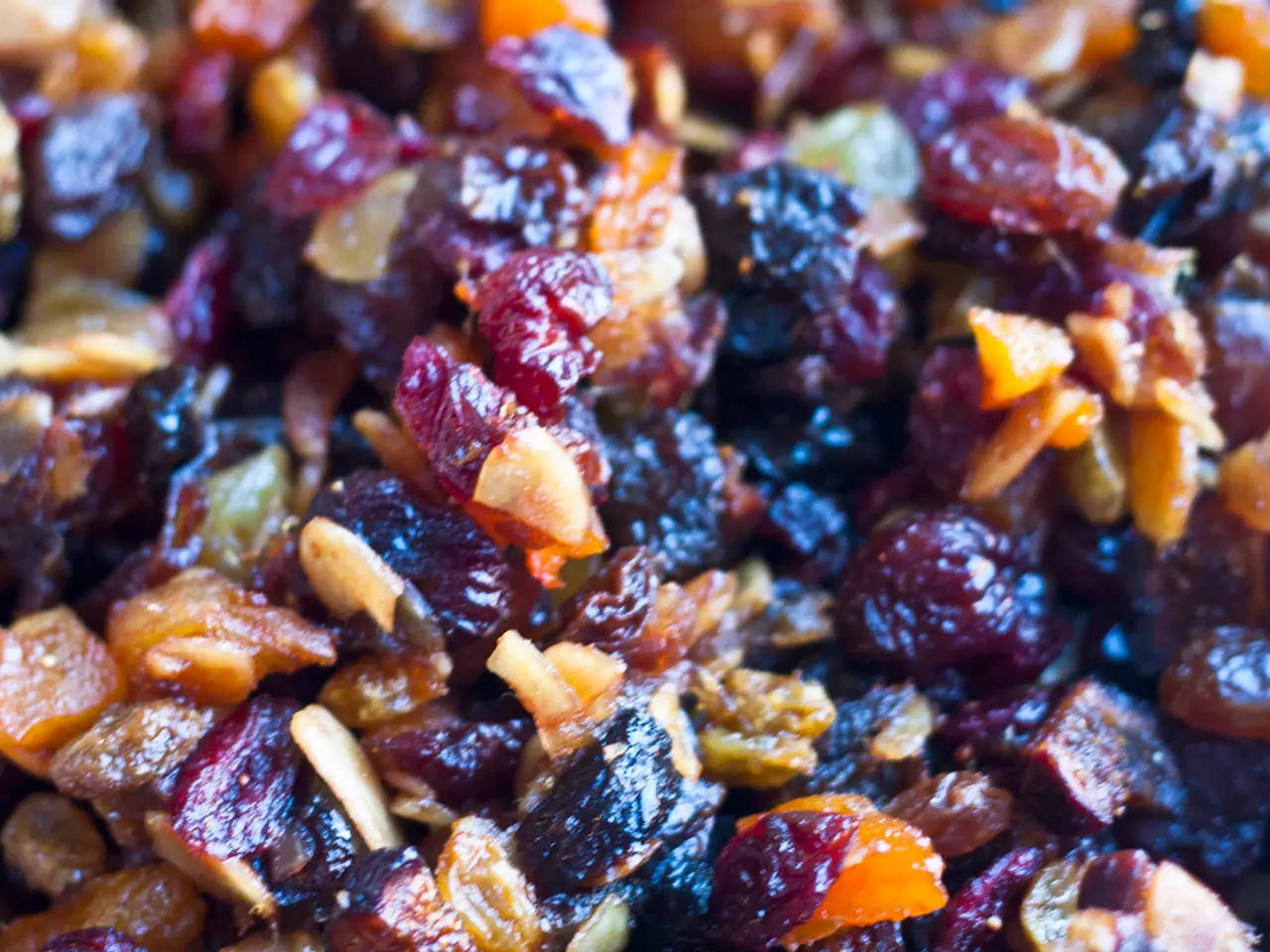Exploring Optimal Fats for Ketogenic Diet and Implementation Strategies
### Long-Term Effects and Considerations of the Keto Diet
The ketogenic (keto) diet, a low-carb, high-fat regimen, has gained popularity for its potential health benefits. However, adhering to this diet long-term comes with both advantages and potential risks.
#### Potential Benefits
For individuals with type 2 diabetes or metabolic syndrome, the keto diet can offer sustained weight loss and improved metabolic health. This includes better blood sugar control, reduced insulin resistance, and cardiovascular benefits such as lower blood pressure and decreased markers of heart disease risk when the diet is well-formulated with healthy fats [4].
#### Potential Risks and Negative Effects
One of the main concerns with the keto diet is the risk of nutrient deficiencies due to restrictive food choices. This can lead to insufficient intake of vitamins and minerals, potentially causing deficiencies [1][3]. Long-term keto use, especially in children, has been linked to decreased bone density and increased fracture risk due to factors like acidosis and suppressed growth hormone [3].
Another potential risk is the development of kidney stones. Approximately 1 in 20 children on keto develop kidney stones, and adults may also be at risk, possibly due to changes in urine composition caused by the diet [1][3]. Elevated cholesterol and blood lipid levels are also a concern, with some individuals experiencing increases in LDL cholesterol and triglycerides, which may increase heart disease risk if unhealthy fats predominate [1][3].
Gastrointestinal symptoms such as constipation or diarrhea, muscle cramps, bad breath, and sleep disturbances can occur initially and sometimes persist [1]. The keto diet is not recommended for people with liver or pancreatic disease, kidney disease, pregnant or breastfeeding women, or those with eating disorders [1].
#### Mitigating Risks While Maintaining Ketosis
To minimize potential risks, it is essential to work with healthcare providers, particularly if you have chronic conditions such as diabetes or hypertension. Medical supervision is crucial to adjust medications and monitor health markers [2].
A well-formulated keto diet emphasizes whole foods and healthier fats (e.g., monounsaturated and polyunsaturated fats) rather than saturated and trans fats to protect cardiovascular health [2][4]. Including a variety of low-carb vegetables and nutrient-dense foods can help reduce vitamin and mineral deficiencies [1][3].
Supplementation with appropriate vitamins, minerals, and electrolytes can also help prevent deficiencies and decrease risks such as kidney stones [3]. Proper fluid and electrolyte intake can reduce muscle cramps and prevent kidney stones or other complications associated with electrolyte imbalance [1].
For chronic conditions, following a maintenance ketogenic phase that can be adhered to for years rather than cycling in and out of ketosis can optimize metabolism and health outcomes [2]. Avoiding extreme practices such as extended fasting beyond 24 hours or carb cycling without professional guidance, especially if you have metabolic impairments, is also advisable [2].
Regular monitoring of blood tests to check lipid profiles, kidney function, bone density, and nutrient status can help catch any issues early for adjustment [1][3].
#### Key Points
- The keto diet requires approximately 70-80% of daily calories to come from fat. - Grass-fed meat is a healthier choice on the keto diet as it contains more omega-3. - A person consuming 2,000 calories per day needs approximately 122-133 grams (g) of fat daily to stay in ketosis. - Healthful sources of unsaturated fat for the keto diet include avocados, nuts (like walnuts, macadamias, almonds, and Brazil nuts), seeds (like flax and pumpkin seeds), oily fish (like salmon, tuna, anchovies, and sardines), olives, and olive oil. - Coconut oil increases high-density lipoprotein (HDL), or good, cholesterol compared to olive oil and butter. - It is better to steam, boil, or stew meat rather than grilling or barbecuing on the keto diet. - The American Diabetes Association advises that people follow a keto diet for a maximum of 6-12 months before gradually transitioning back to a diet that includes more carbohydrates. - White meat, such as chicken and turkey, is recommended over red meat on the keto diet. - Cooking meats at high temperatures can produce carcinogens, which are compounds linked to cancer. - Processed meats (like bacon, sausages, and ham) may contain higher levels of potential carcinogens. - Naturally occurring trans fats in small amounts in animal fats have little evidence of being harmful.
- For sustained weight loss and improved metabolic health, individuals with type 2 diabetes or metabolic syndrome can opt for a low-carb, high-fat ketogenic (keto) diet.
- Approximately 70-80% of daily calories on the keto diet should come from healthful fats such as monounsaturated and polyunsaturated fats.
- Grass-fed meat is a healthier choice on the keto diet as it contains more omega-3, a beneficial type of fat.
- A person consuming 2,000 calories per day needs around 122-133 grams (g) of fat daily to maintain ketosis.
- Olives and olive oil, avocados, nuts like walnuts, macadamias, almonds, and Brazil nuts, seeds like flax and pumpkin seeds, oily fish such as salmon, tuna, anchovies, and sardines are all good sources of unsaturated fats on the keto diet.
- Coconut oil is known to increase high-density lipoprotein (HDL), or good, cholesterol compared to olive oil and butter.
- To protect cardiovascular health on the keto diet, it's advisable to steam, boil, or stew meat instead of grilling or barbecuing.
- The American Diabetes Association suggests following a keto diet for a maximum of 6-12 months before gradually transitioning to a diet with more carbohydrates.
- Regular monitoring of blood tests, including lipid profiles, kidney function, bone density, and nutrient status, is essential for individuals following a keto diet for weight-management and long-term health benefits.




